| Srl | Item |
| 1 |
ID:
167491
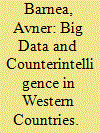

|
|
|
| 2 |
ID:
158748
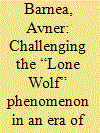

|
|
|
| 3 |
ID:
154060
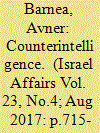

|
|
|
|
|
| Summary/Abstract |
This article discusses the differences between strategic intelligence and counterintelligence, a much less researched subfield of the intelligence discipline. One reason for this scholarly neglect is the perception of counterintelligence as highly sensitive due to its preoccupation with internal affairs, considered too confidential for open discussion. Another reason is the apparent lack of understanding of the real contribution of counterintelligence to national security. This article seeks to fill this scholarly lacuna.
|
|
|
|
|
|
|
|
|
|
|
|
|
|
|
|
| 4 |
ID:
179142
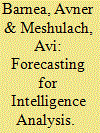

|
|
|
|
|
| Summary/Abstract |
A successful strategic surprise, whether in the military or business sector, can have critical significance both for the initiating organization (the “attacker”) and the organization under attack (“the victim”). In the military sector, the attack can disrupt the victim’s strategic organization, inflict untold damage, foil its ability to protect itself and to react, and even determine the outcome of the battle. For example, the sudden strike that the Germans unleashed on the USSR in Operation Barbarossa (1941) disrupted the USSR’s defense systems, dealt the Russian soldiers a fatal blow, and greatly expedited Germany’s huge land invasion of the USSR. It took the USSR two to three years to recover and rebuild to the level where it could challenge the German powerhouse. The attack on Pearl Harbor in 1941 had the same destructive effect on U.S. forces in a single day.
|
|
|
|
|
|
|
|
|
|
|
|
|
|
|
|
| 5 |
ID:
191885
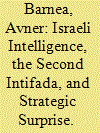

|
|
|
|
|
| Summary/Abstract |
The challenge of this article is on deciding the two-decade-old controversy among Israeli intelligence scholars and practitioners over what caused the outbreak of the Palestinian uprising in October 2000. The question remains: Was it preplanned by the Palestinian Authority or a spontaneous response to the violence that ensued following the visit to the Temple Mount by Israeli opposition leader Sharon, which was seriously escalated by Israel’s excessive military response? Drawing on a theoretical framework of two types of strategic surprises, the article clarifies the controversy and explains the outbreak of what became a long and bloody Israeli–Palestinian confrontation.
|
|
|
|
|
|
|
|
|
|
|
|
|
|
|
|
| 6 |
ID:
172923
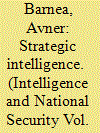

|
|
|
|
|
| Summary/Abstract |
Both the discipline of strategic intelligence at the governmental level and the competitive intelligence discipline constitute accepted methods of supporting decision in order to avert mistakes and prevent strategic surprise. So far, research has focused on national intelligence and intelligence in business separately however, it is possible to use experience accumulated in the business field to improve intelligence practice in national security and vice versa . The central innovation of this article is that mutual learning can be utilized in the context of a model that makes a distinction between a ‘concentrated surprise’ and a ‘diffused surprise’ to provide a breakthrough in the intelligence field for better prediction of the development of surprises.
|
|
|
|
|
|
|
|
|
|
|
|
|
|
|
|